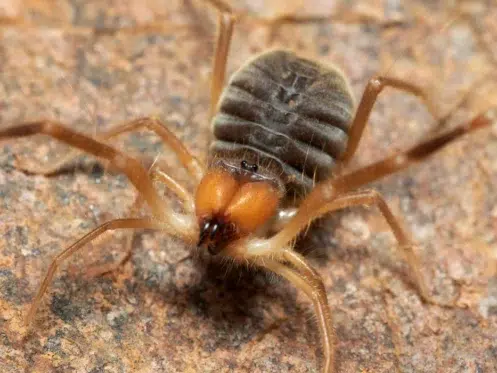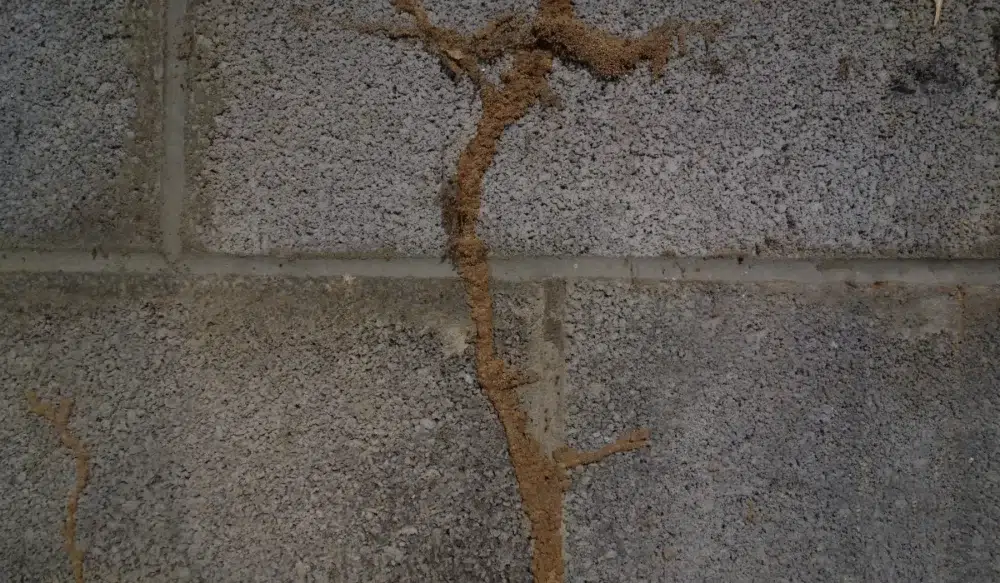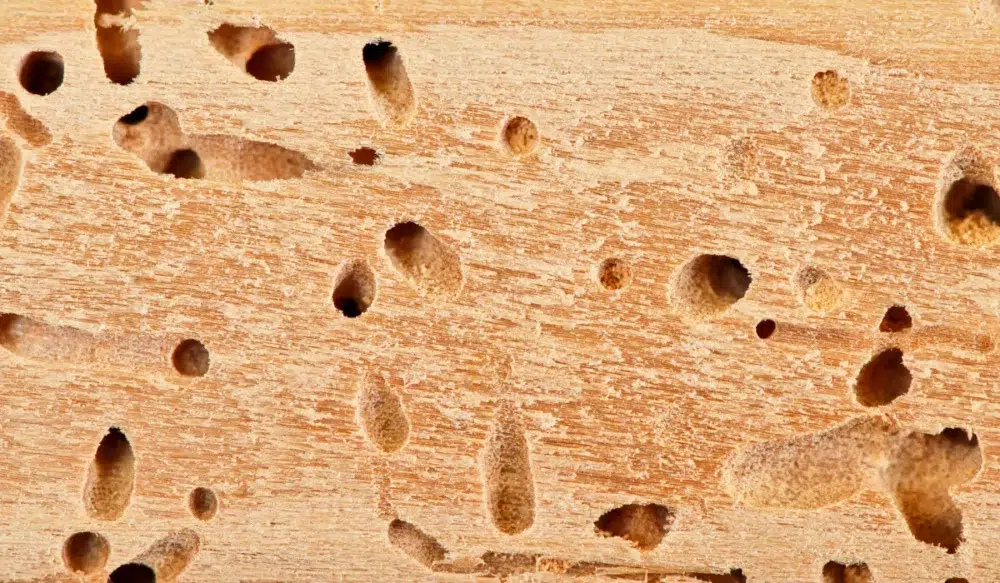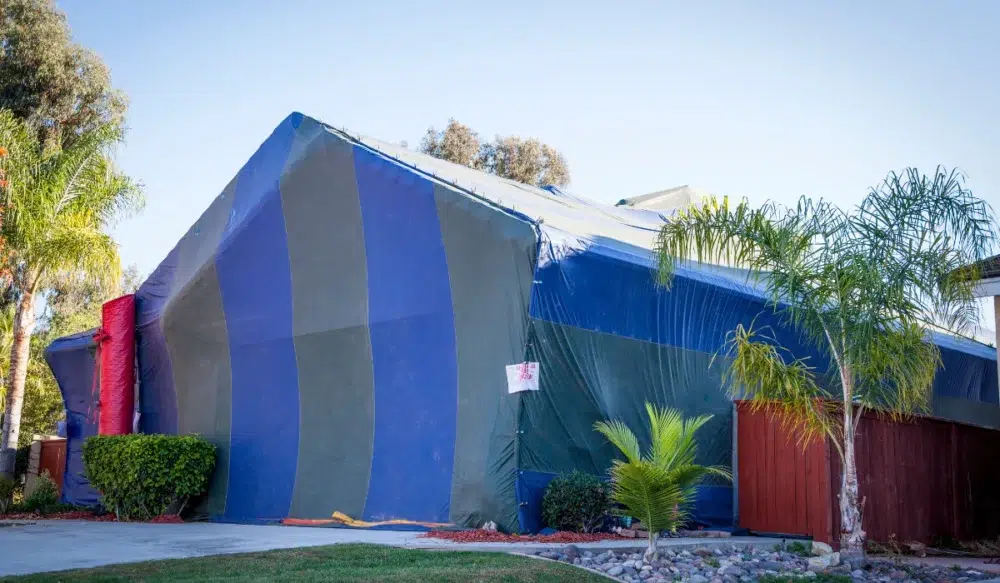In the desert landscapes of Arizona, few critters spark confusion and curiosity like sun spiders. Known by common names such as camel spiders, wind scorpions, and solpugids, these fast-moving arachnids often stir up alarm based on their appearance alone.
But don’t let the rumors fool you. They don’t have venom glands, and they’re not harmful, but still unpleasant to discover indoors.
Here’s how to identify these desert invertebrates, understand their habits, and keep them away from your home.
Key Takeaways
- Sun spiders in Arizona have strong jaws, hairy bodies, no venom glands, and legs that often appear like ten.
- Their habits include burrowing, chasing prey at night, darting quickly, and hiding in shadows to avoid the desert heat.
- Frequent sightings often mean your home or yard supports the food and shelter conditions that sun spiders naturally seek.
- Effective prevention includes sealing gaps, using soft lighting, clearing debris, and hiring pest control for lasting results.
How to Identify a Sun Spider in Arizona
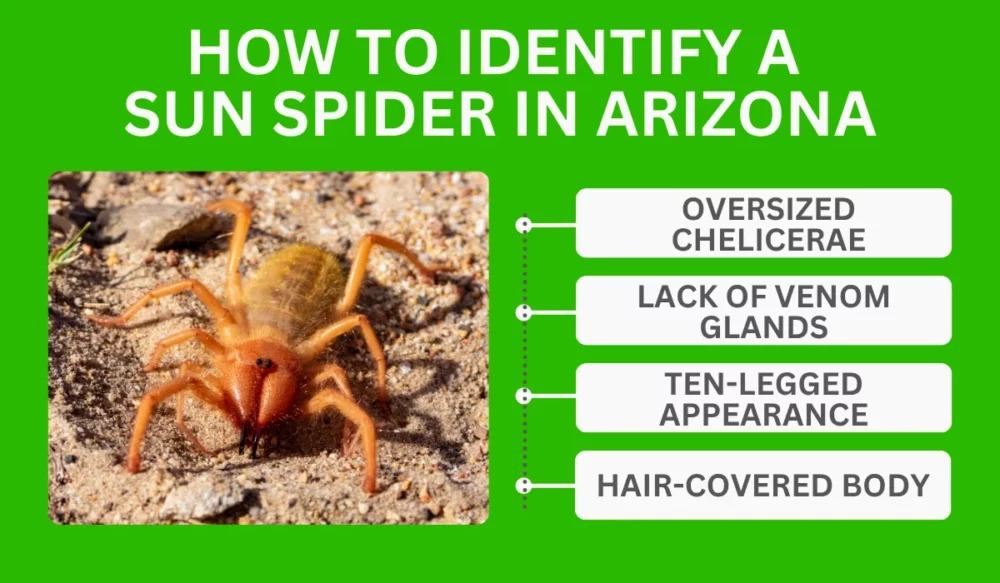
You’ve probably seen a sun spider at some point and remembered it. Their size and shape make them hard to miss.
Here’s how to tell them apart from other desert arthropods in Arizona:
Oversized Chelicerae
Sun spiders’ defining feature is their powerful chelicerae, jaws that look more like pincers than anything else. These aren’t ornamental; they’re used to crush prey like termites, crickets, and even small vertebrates.
If you’ve ever spotted this type of spider carrying food with its jaws across your garage floor, that’s what you were seeing.
In the Arizona desert, their jaws are useful for breaking through the outer shell of other arthropods, giving them an edge over other small invertebrates.
Lack of Venom Glands
One reason people often confuse sun spiders with more dangerous species like the black widow or whip scorpions is their intimidating look. But unlike those arachnids, they lack venom glands.
They rely entirely on physical force to take down prey, a trait that sets them apart from most true spiders and scorpions in Arizona.
Ten-Legged Appearance
What looks like five pairs of legs includes two pedipalps, which sun spiders use like extra limbs to feel their way around.
In dry, rocky terrain, like what you’ll find around Chandler or Tucson, these appendages help them navigate and chase prey efficiently.
Hair-Covered Body
Arizona’s sun spiders don’t have sleek, shiny exoskeletons. Instead, their bodies are covered in fine hairs, which serve as sensory tools for detecting movement and vibrations.
You’re not likely to notice this unless one pauses under a porch light or in your garage, but it’s another feature that separates them from tarantulas and other desert dwellers.
Distinctive Habits of Sun Spiders in Arizona
Sun spiders may look intimidating, but it’s their behavior that makes them stand out. These are the habits that set them apart in the southwest:
Burrowing Behavior
In the heat of the southwest, sun spiders survive by burrowing. They dig small shelters where they can cool off and stay out of sight during the day. These burrows might be found under rocks, mulch, or backyard debris.
Unlike some solifuges in the Middle East or Colorado, which have different terrain to deal with, Arizona sun spiders are well-adapted to our sandy soil.
Nocturnal Hunting
As night falls across Phoenix or Tucson, these solifugid hunters spring into action. Unlike wasps, which may return to a nest, sun spiders are solo operators. They don’t wait for food, they chase it down.
That behavior sets them apart from most backyard critters, especially true spiders, which tend to be passive trappers.
Fast, Erratic Movement
It’s hard to ignore a sun spider once it starts moving. They’re known for their blistering speed and jerky motion, more like a panicked dash than a controlled crawl.
Locals sometimes mistake them for centipedes or even rodents at first glance. But this quick, erratic movement is just how they hunt. If one runs toward you, it’s likely just seeking shade, not attacking.
Attraction to Shade
The desert heat makes shady areas look like safe zones to sun spiders. If your shadow is the closest cool spot, they’ll head for it. In backyard patios or desert trails, this habit often causes a scare.
But it’s important to remember, they’re not chasing people. They’re just wired to survive the heat.
How to Get Rid of Sun Spiders in Arizona
If you’re seeing sun spiders more often than you’d like, it usually means your home is offering the kind of environment they hunt in.
A few adjustments around your property can make a big difference.
Here’s what we recommend:
Sealing Entry Points
Sun spiders often enter homes through small gaps and cracks, especially in homes with stucco exteriors or older foundations, common in the southwest.
Sealing up potential entry points with weatherproof caulk, repairing screen doors, and covering vent gaps can go a long way in keeping them (and the arthropods they eat) outside.
Outdoor Lighting Adjustments
Like many invertebrates, sun spiders follow prey, not light itself. But prey like crickets, wasps, and flying insects are all attracted to light, which means your porch or patio can become an all-you-can-eat buffet.
Swapping out bright bulbs for yellow-tinted “bug lights” helps cut down on food sources, making your home less attractive to these desert arachnids.
Yard Maintenance
Trimming vegetation, removing clutter, and keeping woodpiles off the ground make your yard less inviting to solifuges. Dense bushes and debris create moisture pockets and prey-rich hideouts.
If you’re near desert washes or undeveloped land, this step is even more important. Think of it as your first line of defense in integrated pest control.
Professional Pest Control Services
If you’ve spotted sun spiders multiple times inside your home, or if you’re dealing with a wider arthropod problem involving termites, crickets, or mites, it’s time to bring in a professional.
At Green Home Pest Control, we specialize in eco-conscious solutions tailored to homes across Arizona. We don’t just treat sun spiders. Our approach tackles the pests that attract them.
By cutting off their food supply and habitat options, we reduce sightings and keep your home more comfortable year-round. Reach out today for a custom inspection that targets more than just what’s crawling across your floor.
RELATED: Identify Arizona Spiders Fast: Complete Spider Identification Chart For Homeowners
